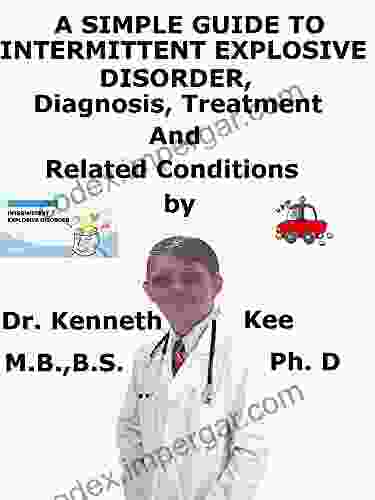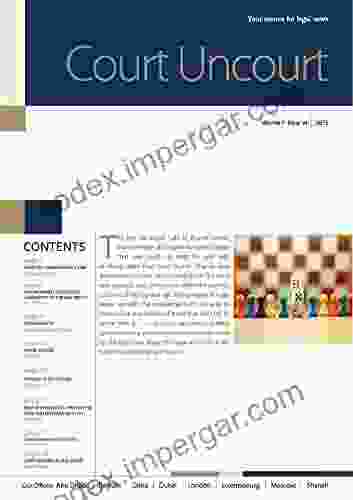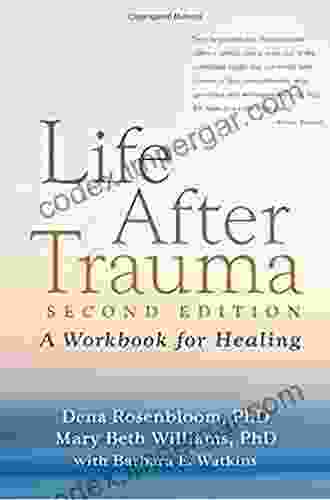Simple Guide to Intermittent Explosive Disorder: Diagnosis, Treatment, and Related

Intermittent Explosive DisFree Download (IED) is a mental health condition characterized by sudden and repeated episodes of impulsive, aggressive behavior. These episodes are out of proportion to the situation and can result in physical or verbal harm to others or damage to property.
5 out of 5
| Language | : | English |
| File size | : | 476 KB |
| Text-to-Speech | : | Enabled |
| Screen Reader | : | Supported |
| Enhanced typesetting | : | Enabled |
| Word Wise | : | Enabled |
| Print length | : | 102 pages |
| Lending | : | Enabled |
Symptoms of IED
The symptoms of IED can vary from person to person, but some common signs include:
- Sudden and intense bursts of anger or rage
- Aggression that is out of proportion to the situation
- Impulsivity and lack of control
- Verbal or physical harm to others
- Damage to property
- Feeling ashamed or guilty after an episode
Diagnosis of IED
IED is diagnosed by a mental health professional, such as a psychiatrist or psychologist. The diagnosis is based on a comprehensive evaluation of the person's symptoms, history, and behavior. The evaluation may include:
- A physical examination to rule out any medical conditions that may be contributing to the symptoms
- A psychological evaluation to assess the person's thoughts, feelings, and behaviors
- A review of the person's medical and psychological history
- A discussion of the person's current symptoms and how they are affecting their life
Treatment for IED
The treatment for IED typically involves a combination of therapy and medication. Therapy can help the person to understand their triggers, develop coping mechanisms, and learn how to manage their anger. Medication can help to reduce the frequency and severity of the episodes.
Some common types of therapy for IED include:
- Cognitive-behavioral therapy (CBT): CBT helps the person to identify and change their negative thoughts and behaviors.
- Dialectical behavior therapy (DBT): DBT helps the person to regulate their emotions and develop healthier coping mechanisms.
- Anger management therapy: Anger management therapy teaches the person how to manage their anger and avoid violent outbursts.
Some common medications used to treat IED include:
- Antidepressants: Antidepressants can help to reduce the symptoms of depression and anxiety, which can be triggers for IED.
- Mood stabilizers: Mood stabilizers can help to regulate the person's mood and prevent extreme mood swings.
- Antipsychotics: Antipsychotics can help to reduce the symptoms of psychosis, which can be a symptom of IED.
Related Conditions
IED is often associated with other mental health conditions, such as:
- Attention-deficit hyperactivity disFree Download (ADHD)
- Oppositional defiant disFree Download (ODD)
- Conduct disFree Download
- Substance use disFree Downloads
- Personality disFree Downloads
It is important to note that IED is a serious mental health condition that can have a significant impact on the person's life and relationships. If you think you or someone you know may be struggling with IED, it is important to seek professional help.
IED is a complex mental health condition that can be difficult to manage. However, with the right treatment, people with IED can learn to manage their symptoms and improve their quality of life.
If you are interested in learning more about IED, here are some additional resources:
- National Institute of Mental Health (NIMH)
- Mayo Clinic
- WebMD
5 out of 5
| Language | : | English |
| File size | : | 476 KB |
| Text-to-Speech | : | Enabled |
| Screen Reader | : | Supported |
| Enhanced typesetting | : | Enabled |
| Word Wise | : | Enabled |
| Print length | : | 102 pages |
| Lending | : | Enabled |
Do you want to contribute by writing guest posts on this blog?
Please contact us and send us a resume of previous articles that you have written.
 Book
Book Novel
Novel Page
Page Chapter
Chapter Text
Text Story
Story Genre
Genre Reader
Reader Library
Library Paperback
Paperback E-book
E-book Magazine
Magazine Newspaper
Newspaper Paragraph
Paragraph Sentence
Sentence Bookmark
Bookmark Shelf
Shelf Glossary
Glossary Bibliography
Bibliography Foreword
Foreword Preface
Preface Synopsis
Synopsis Annotation
Annotation Footnote
Footnote Manuscript
Manuscript Scroll
Scroll Codex
Codex Tome
Tome Bestseller
Bestseller Classics
Classics Library card
Library card Narrative
Narrative Biography
Biography Autobiography
Autobiography Memoir
Memoir Reference
Reference Encyclopedia
Encyclopedia Brian Brown
Brian Brown Ewa Joanna Galewska
Ewa Joanna Galewska Bruce Fink
Bruce Fink Volume 34 Issue 8 Edition
Volume 34 Issue 8 Edition David Cavan
David Cavan Brian Drohan
Brian Drohan Brian Starkman
Brian Starkman Branko Mitrovic
Branko Mitrovic Bruce Altshuler
Bruce Altshuler John Hoffman
John Hoffman Leslie Woodhead
Leslie Woodhead Haroon Shaikhmiri
Haroon Shaikhmiri David Hu
David Hu Peter Morville
Peter Morville Granger E Westberg
Granger E Westberg Bradford Stone
Bradford Stone C P Dadant
C P Dadant Isobel W Heathcote
Isobel W Heathcote Paradigm Shift Driver Development
Paradigm Shift Driver Development Sean Martin
Sean Martin
Light bulbAdvertise smarter! Our strategic ad space ensures maximum exposure. Reserve your spot today!
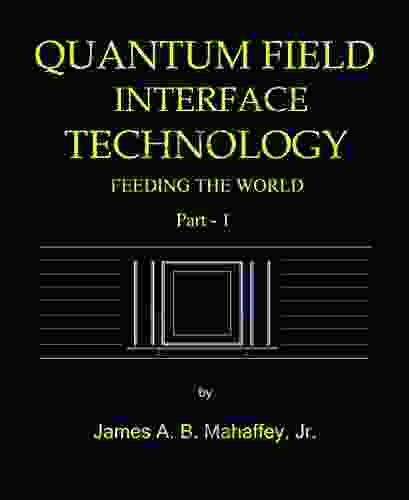
 Hunter MitchellUnlocking Sustainable Food Security: Quantum Field Interface Technology's...
Hunter MitchellUnlocking Sustainable Food Security: Quantum Field Interface Technology's... Jack LondonFollow ·10.8k
Jack LondonFollow ·10.8k Pat MitchellFollow ·10.2k
Pat MitchellFollow ·10.2k James JoyceFollow ·4.4k
James JoyceFollow ·4.4k Jared NelsonFollow ·2.9k
Jared NelsonFollow ·2.9k Roland HayesFollow ·2.8k
Roland HayesFollow ·2.8k Craig BlairFollow ·12.2k
Craig BlairFollow ·12.2k Casey BellFollow ·10.9k
Casey BellFollow ·10.9k Cooper BellFollow ·11.8k
Cooper BellFollow ·11.8k
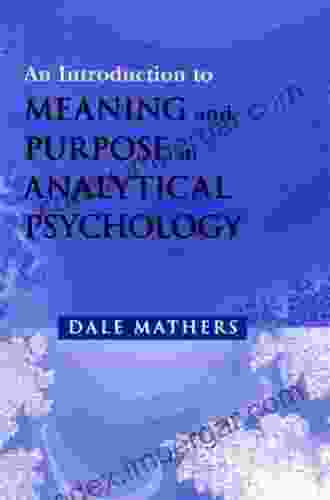
 Gary Cox
Gary CoxUnlocking Meaning and Purpose in Life: An Exploration of...
In an increasingly...

 Eric Hayes
Eric HayesMemoirs of the Early Pioneer Settlers of Ohio Illustrated
A Window into the Lives of Courageous...

 J.R.R. Tolkien
J.R.R. TolkienThe Montgomerys and Their Descendants: A Saga of Courage,...
Prepare to be...

 Avery Simmons
Avery SimmonsThe Rifle Musket: The Dawn of Modern Infantry Warfare
: The rifle musket, a revolutionary...

 Jesse Bell
Jesse BellUnlock the Power of Excel with VBA and Macros: A...
Microsoft Excel is a powerful spreadsheet...
5 out of 5
| Language | : | English |
| File size | : | 476 KB |
| Text-to-Speech | : | Enabled |
| Screen Reader | : | Supported |
| Enhanced typesetting | : | Enabled |
| Word Wise | : | Enabled |
| Print length | : | 102 pages |
| Lending | : | Enabled |


